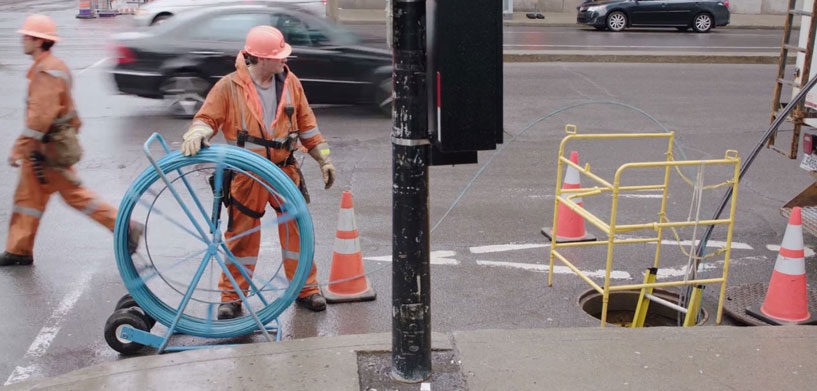For years, telecommunications have relied on a bulky network of copper wiring. But, as businesses and consumers demand faster and more secure network systems, companies have turned to fiber optics.
Fiber optics has grown exponentially since its introduction more than 30 years ago, while its costs have plummeted. Because of its reliability, speed, and security, more industries are looking to what fiber optics can deliver now and in the future.
Why is fiber optics so popular?
Speed is an obvious reason for fiber optics’ growing appeal. It can transmit data at speeds measured in terabits, whereas copper’s peak is 40 Gbps.
It’s also extremely secure, because it’s impervious to electrical interference, assuring no leakage of information between cable signals. Those same factors reduce signal loss and interference. It’s nearly impossible to intercept data from fiber, which is not true of copper cables.
Reliability is another key factor. Optical fibers, though as thin as a human hair, are durable and strong when bundled. That strength helps fiber cables withstand even the most extreme environmental conditions.
Industries & fiber optics
The switch from copper to fiber has been largely driven by telecommunications companies and customers requesting high-speed connections at homes and businesses. Fiber optics expansion is often the result of existing customers seeking increased bandwidth. However, in many cases, telcos also receive requests to change from copper to fiber, or establish new fiber optics connections entirely.
As operating requirements and business needs become more extensive and complex, some utility, manufacturing, and transportation industries are deploying their own fiber. In addition to reliable service, fiber optics offers numerous advantages, including connectivity to sensors, SCADA devices, and smart meters, as well as high-speed transmission of mission-critical data.
Fiber optics’ ability to support diverse uses only emphasizes its benefits. For example, utilities deploying fiber for SCADA and advanced metering infrastructure (AMI) use the same assets to provide high-speed broadband to customers. Cities are also building or expanding fiber networks for high-speed intranet, which supports intelligent transportation systems, sensor networks, and public access.
Should your company implement fiber optics?
Organizations critical to the public should be using the best and most affordable technology available. While copper might be sufficient for smaller businesses, fiber can transform larger organizations. Not only can it improve reliability, it can also support rapidly changing needs.
See how an advanced GIS that supports geospatial infrastructure management can help increase the capacity of fiber networks, improve integration, simplify system deployment, and optimize resources.
Enjoy this post? Subscribe to our blog and have industry insights delivered right to your inbox each week. Subscribe now.















